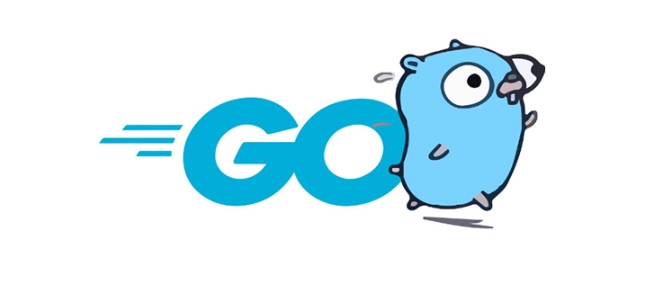Integrating Go with Kafka for Streaming Data
Go and Kafka integration is an effective solution to build high-performance real-time data systems. The appropriate client library should be selected according to needs: 1. Priority is given to kafka-go to obtain simple Go-style APIs and good context support, suitable for rapid development; 2. Select Sarama when fine control or advanced functions are required; 3. When implementing producers, you need to configure the correct Broker address, theme and load balancing strategies, and manage timeouts and shutdowns through context; 4. Consumers should use consumer groups to achieve scalability and fault tolerance, automatically submit offsets and use concurrent processing reasonably; 5. Use JSON, Avro or Protobuf for serialization, and it is recommended to combine Schema Registry to ensure data compatibility; 6. Improve system resilience through retry mechanisms, structured logs (such as zap), and monitoring (such as Prometheus); 7. Always handle errors and implement graceful closing to ensure messages are not lost. In summary, adopting a reasonable model can enable Go services to efficiently process high-throughput data, which is suitable for event-driven architectures and microservice communications.

Go has become a popular choice for building high-performance, concurrent systems, and Apache Kafka is a leading distributed streaming platform. Combining the two allow developers to build scalable, real-time data pipelines and event-driven architectures. Integrating Go with Kafka enables efficient ingestion, processing, and delivery of streaming data across microservices and data platforms.

Here's how to effectively integrate Go with Kafka for streaming data:
1. Choose the Right Kafka Client for Go
The most widely used and perform Kafka client in the Go ecosystem is Shopify/sarama . It's a pure Go library that supports both producers and consumers, with features like SSL, SASL authentication, and message compression.

Alternatively, segmentio/kafka-go provides a simpler, idiomatic Go interface built on top of the standard net package. It's easier to use for beginners and integrates well with Go's context package.
When to use which:

- Use Sarama if you need fine-grained control, advanced Kafka features, or are already using it in production.
- Use kafka-go if you prefer cleaner code, better context integration, and faster development.
2. Implement a Kafka Producer in Go
A producer publishes messages to a Kafka topic. Here's a basic example using kafka-go :
package main
import (
"context"
"log"
"github.com/segmentio/kafka-go"
)
func main() {
writer := &kafka.Writer{
Addr: kafka.TCP("localhost:9092"),
Topic: "my-topic",
Balancer: &kafka.LeastBytes{},
}
err := writer.WriteMessages(context.Background(),
kafka.Message{
Key: []byte("key-1"),
Value: []byte("Hello Kafka from Go!"),
},
)
if err != nil {
log.Fatal("Failed to write message:", err)
}
writer.Close()
}Key points:
- Use
contextfor timeouts and graceful shutdowns. - Handle errors properly—network issues and broker unavailability are common.
- Consider batching and compression for high-throughput scenarios.
3. Build a Kafka Consumer with Proper Error Handling
Consumers read messages from topics. Here's a simple consumer using kafka-go :
reader := kafka.NewReader(kafka.ReaderConfig{
Brokers: []string{"localhost:9092"},
Topic: "my-topic",
GroupID: "my-group", // enables consumer groups and offset management
MinBytes: 10e3, // 10KB
MaxBytes: 10e6, // 10MB
})
for {
msg, err := reader.ReadMessage(context.Background())
if err != nil {
log.Fatal("Error reading message:", err)
}
log.Printf("Received: %s | Topic: %s | Partition: %d | Offset: %d",
string(msg.Value), msg.Topic, msg.Partition, msg.Offset)
}Best practices:
- Always use consumer groups for scalability and fault tolerance.
- Commit offsets regularly (kafka-go does this automatically unless disabled).
- Use concurrent goroutines to process messages in parallel, but be careful with shared state.
Example: Process messages concurrently:
go func() {
for {
msg, _ := reader.ReadMessage(context.Background())
go func(m kafka.Message) {
// Process message
log.Println("Processing:", string(m.Value))
}(msg)
}
}()4. Handle Serialization and Schema Management
Kafka messages are raw bytes. For structured data, use serialization formats like:
- JSON – simple and readable
- Avro/Protobuf – efficient, schema-enforced (better for large-scale systems)
With Protobuf:
data, _ := proto.Marshal(&MyEvent{UserId: 123, Action: "login"})
writer.WriteMessages(ctx, kafka.Message{Value: data})Use Schema Registry (eg, Confluent Schema Registry) with Avro to enforce compatibility and versioning.
5. Ensure Resilience and Observability
Streaming systems must be resilient. Consider:
- Retries and backoff for transient failures
- Logging and monitoring (eg, Prometheus Grafana)
- Graceful shutdown to avoid losing messages
Example: Add retry logic
var err error
for i := 0; i < 3; i {
err = writer.WriteMessages(ctx, msg)
if err == nil {
break
}
time.Sleep(time.Duration(i 1) * time.Second)
}
if err != nil {
log.Fatal("Failed after retries:", err)
} Use structured logging (eg, zap or logrus ) to track message flow and errors.
Conclusion
Integrating Go with Kafka is a powerful combination for building real-time data systems. Use kafka-go for simplicity and modern Go patterns, or Sarama for advanced use cases. Focus on proper error handling, serialization, and observability to ensure reliability.
With the right patterns, Go services can efficiently produce and consume high-volume streams, making them ideal for event sourcing, log aggregation, and microservices communication.
Basically, keep it simple, handle errors, and scale smartly.
The above is the detailed content of Integrating Go with Kafka for Streaming Data. For more information, please follow other related articles on the PHP Chinese website!

Hot AI Tools

Undress AI Tool
Undress images for free

Undresser.AI Undress
AI-powered app for creating realistic nude photos

AI Clothes Remover
Online AI tool for removing clothes from photos.

Clothoff.io
AI clothes remover

Video Face Swap
Swap faces in any video effortlessly with our completely free AI face swap tool!

Hot Article

Hot Tools

Notepad++7.3.1
Easy-to-use and free code editor

SublimeText3 Chinese version
Chinese version, very easy to use

Zend Studio 13.0.1
Powerful PHP integrated development environment

Dreamweaver CS6
Visual web development tools

SublimeText3 Mac version
God-level code editing software (SublimeText3)
 How do you work with environment variables in Golang?
Aug 19, 2025 pm 02:06 PM
How do you work with environment variables in Golang?
Aug 19, 2025 pm 02:06 PM
Goprovidesbuilt-insupportforhandlingenvironmentvariablesviatheospackage,enablingdeveloperstoread,set,andmanageenvironmentdatasecurelyandefficiently.Toreadavariable,useos.Getenv("KEY"),whichreturnsanemptystringifthekeyisnotset,orcombineos.Lo
 How to create and use custom error types in Go
Aug 11, 2025 pm 11:08 PM
How to create and use custom error types in Go
Aug 11, 2025 pm 11:08 PM
In Go, creating and using custom error types can improve the expressiveness and debugability of error handling. The answer is to create a custom error by defining a structure that implements the Error() method. For example, ValidationError contains Field and Message fields and returns formatted error information. The error can then be returned in the function, detecting specific error types through type assertions or errors.As to execute different logic. You can also add behavioral methods such as IsCritical to custom errors, which are suitable for scenarios that require structured data, differentiated processing, library export or API integration. In simple cases, errors.New, and predefined errors such as ErrNotFound can be used for comparable
 How to implement a generic LRU cache in Go
Aug 18, 2025 am 08:31 AM
How to implement a generic LRU cache in Go
Aug 18, 2025 am 08:31 AM
Use Go generics and container/list to achieve thread-safe LRU cache; 2. The core components include maps, bidirectional linked lists and mutex locks; 3. Get and Add operations ensure concurrency security through locks, with a time complexity of O(1); 4. When the cache is full, the longest unused entry will be automatically eliminated; 5. In the example, the cache with capacity of 3 successfully eliminated the longest unused "b". This implementation fully supports generic, efficient and scalable.
 How do you handle signals in a Go application?
Aug 11, 2025 pm 08:01 PM
How do you handle signals in a Go application?
Aug 11, 2025 pm 08:01 PM
The correct way to process signals in Go applications is to use the os/signal package to monitor the signal and perform elegant shutdown. 1. Use signal.Notify to send SIGINT, SIGTERM and other signals to the channel; 2. Run the main service in goroutine and block the waiting signal; 3. After receiving the signal, perform elegant shutdown with timeout through context.WithTimeout; 4. Clean up resources such as closing database connections and stopping background goroutine; 5. Use signal.Reset to restore the default signal behavior when necessary to ensure that the program can be reliably terminated in Kubernetes and other environments.
 How to use path/filepath for cross-platform path manipulation in Go
Aug 08, 2025 pm 05:29 PM
How to use path/filepath for cross-platform path manipulation in Go
Aug 08, 2025 pm 05:29 PM
Usefilepath.Join()tosafelyconstructpathswithcorrectOS-specificseparators.2.Usefilepath.Clean()toremoveredundantelementslike".."and".".3.Usefilepath.Split()toseparatedirectoryandfilecomponents.4.Usefilepath.Dir(),filepath.Base(),an
 How do you define and call a function in Go?
Aug 14, 2025 pm 06:22 PM
How do you define and call a function in Go?
Aug 14, 2025 pm 06:22 PM
In Go, defining and calling functions use the func keyword and following fixed syntax, first clarify the answer: the function definition must include name, parameter type, return type and function body, and pass in corresponding parameters when calling; 1. Use funcfunctionName(params) returnType{} syntax when defining functions, such as funcadd(a,bint)int{return b}; 2. Support multiple return values, such as funcdivide(a,bfloat64)(float64,bool){}; 3. Calling functions directly uses the function name with brackets to pass parameters, such as result:=add(3,5); 4. Multiple return values can be received by variables or
 Performance Comparison: Java vs. Go for Backend Services
Aug 14, 2025 pm 03:32 PM
Performance Comparison: Java vs. Go for Backend Services
Aug 14, 2025 pm 03:32 PM
Gotypicallyoffersbetterruntimeperformancewithhigherthroughputandlowerlatency,especiallyforI/O-heavyservices,duetoitslightweightgoroutinesandefficientscheduler,whileJava,thoughslowertostart,canmatchGoinCPU-boundtasksafterJIToptimization.2.Gouseslessme
 Parsing RSS and Atom Feeds in a Go Application
Aug 18, 2025 am 02:40 AM
Parsing RSS and Atom Feeds in a Go Application
Aug 18, 2025 am 02:40 AM
Use the gofeed library to easily parse RSS and Atomfeed. First, install the library through gogetgithub.com/mmcdole/gofeed, then create a Parser instance and call the ParseURL or ParseString method to parse remote or local feeds. The library will automatically recognize the format and return a unified feed structure. Then iterate over feed.Items to get standardized fields such as title, link, and publishing time. It is also recommended to set HTTP client timeouts, handle parsing errors, and use cache optimization performance to ultimately achieve simple, efficient and reliable feed resolution.







